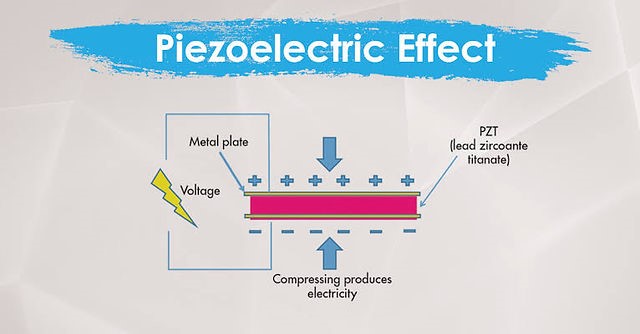Description

Disclaimer: Copyright infringement not intended.
In News
- For the first time, scientists have reported evidence of the piezoelectric effect in liquids.
Details
- The effect was found in pure 1-butyl-3-methyl imidazolium bis(trifluoromethyl-sulfonyl)imide and 1-hexyl-3-methyl imidazolium bis(trifluoromethylsulfonyl)imide – both ionic liquids (i.e. liquids made of ions instead of molecules) at room temperature.
- The effect has been known for 143 years and in this time has been observed only in solids.
- The new finding challenges the theory that describes this effect as well as opens the door to previously unanticipated applications in electronic and mechanical systems.
.jpeg)
What is the piezoelectric effect?
- Piezoelectric Effect is the ability of certain materials to generate an electric charge in response to applied mechanical stress.
- In the piezoelectric effect, a body develops an electric current when it is squeezed.
Watch: https://www.youtube.com/watch?v=4nbBAG-848c
Discovery
- “The piezoelectric effect was discovered in 1880, in quartz.
Example
- Quartz is the most famous piezoelectric crystal: it is used in this capacity in analog wristwatches and clocks.
Applications
- Such crystals are also used in cigarette lighters, electric guitars, TV remote controls, audio transducers, and other instruments where converting mechanical stress to a current is useful.

Why the effect in liquids surprising?
- The reason the piezoelectric effect has only been expected in solids thus far is that the body being squeezed needs to have an organised structure, like the pyramids of quartz.
- Liquids don’t have such structure; instead, they take the shape of their container.
Significance
- The discovery opens the door to applications that have previously not been accessible with solid-state materials, and [room-temperature ionic liquids] are more readily recyclable and in many instances pose fewer environmental issues than many currently used piezoelectric materials.
- The liquids also displayed the inverse piezoelectric effect: they became distorted when an electric charge was applied. This fact could be used to control how the liquids bent light passing through them by passing different currents through them. That is, using this simple control mechanism, vials of these liquids could be lenses with dynamic focusing abilities.
- Having a theory to explain the liquids’ behaviour could reveal why these liquids behave the way they do, which could in turn reveal better ways to manipulate them, and develop newer applications.
|
PRACTICE QUESTION
Q. What is the piezoelectric effect and what are its day-to-day applications? Briefly describe.
|

https://www.thehindu.com/sci-tech/science/scientists-spot-piezoelectric-effect-in-liquids-for-the-first-time/article66671337.ece












